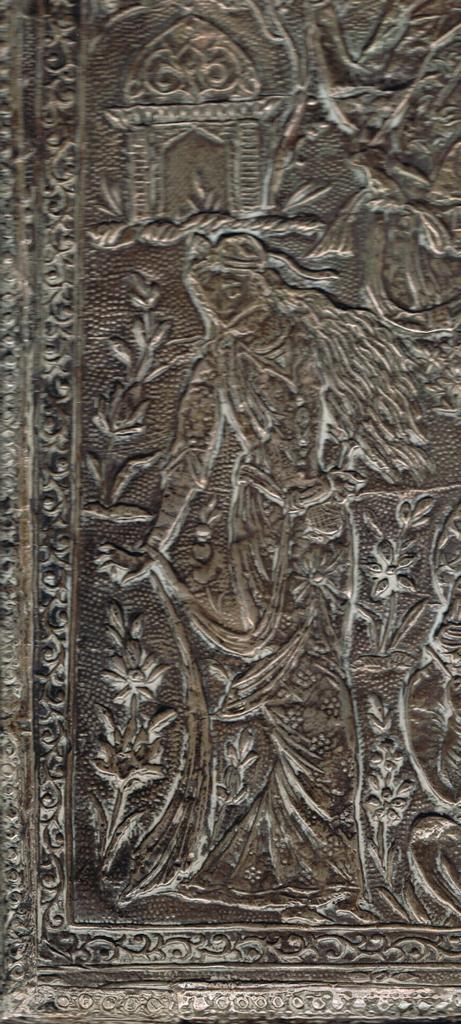FWP:
SETS == EK; KAHAN
SOUND EFFECTS: {26,7}
Some general points about this whole gazal have been made in {85,1}.
The verse makes a then/now contrast, with the first line describing the past and the second line, the present. But the two lines are welded together; although technically each could be read separately, there's no way we could tell what vuh in the first line referred to (or what feminine noun thii was agreeing with) until we heard ra((naa))ii .
And ra((naa))ii in fact dominates the whole verse. It's such a graceful-sounding word in itself, and its long aa sounds (since the ((ain here sounds like alif ) almost demand to be prolonged and caressed. Then the effect is enhanced by the long alif sounds of ;xayaal and kahaa;N . This sensuous flowingness is especially marked since it follows the notably consonant-heavy, short-vowelled set of ik , sha;x.s , and ta.savvur in the first line.
It's also clear that this ra((naa))ii-e ;xayaal, this 'graceful movement of thought', is internally generated-- it's not attributed to the beloved's beauty, but to the ta.savvur , the 'imagining' or 'image', of 'one individual'. Nazm makes an excellent point about this phrase: that saying merely ik sha;x.s conveys an air of detachment appropriate to a former lover marvelling at the loss of his long-ago passions of the mind.
There's of course another possible interpretation of ik
sha;x.s -- it could refer not to the beloved at all, but to the lover
himself. On this reading, the ex-lover is explicitly marvelling at his own
imaginative powers-- how was it possible for a single individual's imagination
to create such 'graceful movement of thought' as his impassioned imagination
used to create, and where is all that grace now? This kind of ambiguity of the possessive is pervasive in Urdu-- is 'your thought' in your head, or in my head (='the thought of you')? For discussion and examples, see {41,6}.

Nazm:
Here, the phrase ik sha;x.s is very eloquent [balii;G]. If instead of it he had said ik sho;x [one mischievous one], then praise of the beloved would have emerged and it would have been clear that relish and ardor are still left, so that he has constructed the beloved in those words. And this would have been contrary to the claim of his situation. (83-84)
== Nazm page 83; Nazm page 84